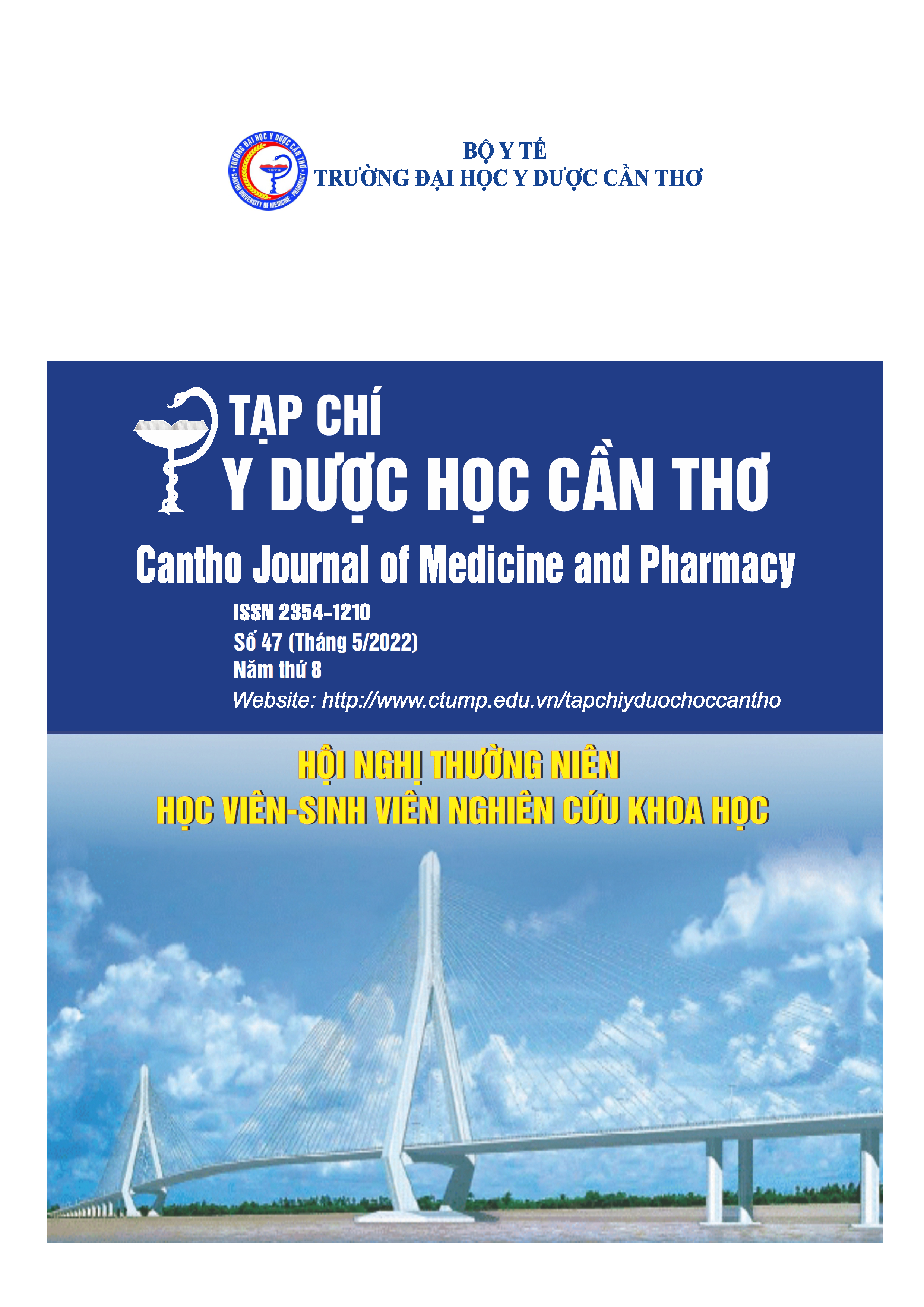Clinical features, radiographical findings and outcome evaluation for the treatment of acromioclavicular joint dislocation with lock hook plate
Main Article Content
Abstract
Background: Acromioclavicular joint (ACJ) dislocation is a common shoulder injury. Currently, there is no consensus on conservative treatment and surgical technique options. Reduction and fixation with hook surgery are effective in treating acute ACJ dislocation. However, there are very few studies evaluating the results of this method. Objectives: To describe the clinical characteristics, radiographical findings and evaluate outcomes of acute ACJ dislocation treated by internal fixation with a lock hook plate. Materials and methods: A prospective clinical study on 35 patients diagnosed with ACJ dislocation grade III or higher according to Rockwood classification were assigned surgical treatment with a hook plate, at Can Tho Central General Hospital in 2020- 2022. We documented the general characteristics of patients, clinical features, radiographical findings and treatment outcomes. Results: 35 patients (26 men/9 women, 44.2 y) were included in the study. The ACJ dislocation of grades III and V were almost equal in proportion. The averaged surgery time was approximately 60 minutes. The result of reduction of ACJ was 100%. According to the Constant-Murley Score, the functional results increased from 54.8±4.2 before surgery to 88.5±3.8 after 6 months of surgery, and the Constant-Murley level achieved 100% good to excellent.
The satisfaction level of patients was 77.1% very satisfied and 22.9% satisfied. Conclusion: Reduction and fixation surgery with lock hook plate in the treatment of acute ACJ dislocation (<3 weeks) is one of the suitable methods with the ability to reduce and rehabilitate good function of the joint so that the patients can return to activity and work soon.
Article Details
Keywords
Acute acromioclavicular joint dislocation, lock hook plate
References
2. Vũ Xuân Thành (2020), Nghiên cứu kết quả điều trị trật khớp cùng đòn bằng tái tạo dây chằng quạ đòn, Luận án Tiến sĩ Y học, Đại học Y Dược TP.Hồ Chí Minh.
3. Frederick M. Azar, James H. Beaty and S. Terry Canale (2017), Acute dislocations, Campbell's
Operative Orthopaedics, 13th, pp.3127-3132.
4. Gowd Anirudh K, Liu Joseph N, Cabarcas Brandon C, Cvetanovich Gregory L, Garcia Grant H, and et al. (2018), Current concepts in the operative management of acromioclavicular dislocations: a systematic review and meta-analysis of operative techniques, The American
journal of sports medicine, pp.1-14.
5. Hemmann P., Koch M., Gühring M., Bahrs C. and Ziegler P. (2021), Acromioclavicular joint separation treated with clavicular hook plate: a study of radiological and functional
outcomes, Archives of orthopaedic and trauma surgery, 141(4), pp.603-610.
6. Kaisa J Virtanen and et al. (2013), Surgical treatment of Rockwood grade V acromioclavicular joint dislocations 50 patients followed for 15-22 years, Acta Orthopaedica, 84(2), pp.191-237.
7. Kenneth Egol, Kenneth Koval and Joseph Zuckerman (2015), Acromioclavicular and Sternoclavicular Joint Injuries, Handbook of Fractures, 5th Editon, Wolters Kluwer Health, Philadelphia, pp. 140-149.
8. Kienast B., Thietje R., Queitsch C., Gille J., Schulz A. P. and Meiners J. (2011), Mid-term results after operative treatment of rockwood grade III-V acromioclavicular joint dislocations with an AC-hook plate, Eur J Med Res, 2, (16), pp.52-6.
9. Paul Tornetta III and et al. (2020), Acromioclavicular and Sternoclavicular Joint Injuries, Rockwood and Green's fractures in Adults, 9th, pp.1517-1616.
10. Sirin E., Aydin N. and Mert Topkar O. (2018), Acromioclavicular joint injuries: diagnosis, classification and ligamentoplasty procedures, EFORT Open Rev, 7, (3), pp.426-433.


